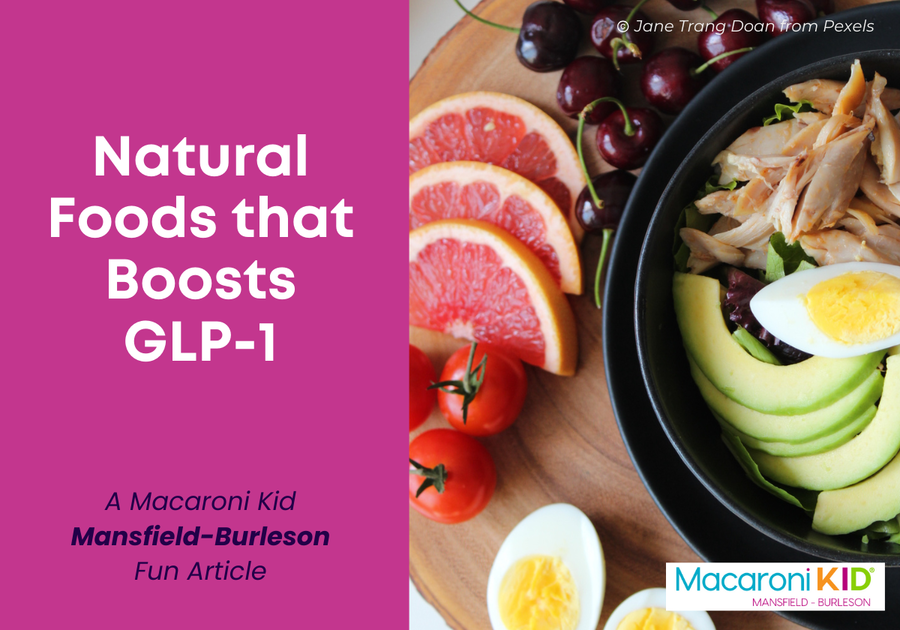Did you know that what you eat can impact your body’s natural ability to manage blood sugar and make you feel full? It’s all thanks to a little hormone called GLP-1.
Last Friday, we talked about GLP-1 agonists and their role in managing blood sugar and promoting fullness. In this article, we will explore how certain foods can naturally boost your body’s GLP-1 levels. Let’s take a closer look at these family-friendly options and how they can support your health and well-being.
Let's do a recap: What is GLP-1 and Why Does it Matter?
GLP-1 (glucagon-like peptide-1) is a hormone made in your gut that plays a big role in regulating blood sugar levels. It helps your body release insulin (the hormone that lowers blood sugar) and reduces the production of glucagon (a hormone that raises it).
But that’s not all—GLP-1 also slows down digestion, keeping you fuller longer, which can help with weight management.
Foods That Naturally Boost GLP-1
Including certain foods in your family’s meals can help promote the release of GLP-1.
Here are some superstar options:
Eggs
Eggs are packed with protein and healthy fats. Research shows that a breakfast featuring eggs (like scrambled eggs or an omelet) can help lower blood sugar levels after eating and keep you feeling satisfied. Even egg whites have been found to stimulate GLP-1 release.
Nuts
Almonds, pistachios, and peanuts aren’t just great snacks—they’re also rich in protein, fiber, and healthy fats that encourage GLP-1 release. They help slow digestion, leading to a steady release of glucose into the bloodstream and improving insulin sensitivity.
High-Fiber Grains
Oats, barley, and whole wheat are high in soluble fiber, which slows digestion and helps release GLP-1. Bonus: When fiber is fermented in your gut, it produces short-chain fatty acids that further stimulate this important hormone.
Avocados
This creamy fruit is full of fiber and monounsaturated fats. Studies show that adding avocado to meals can increase GLP-1 levels and even reduce insulin spikes. Try it on toast or as a topping for salads!
Olive Oil
The healthy fats in olive oil, especially when part of a Mediterranean-style diet, have been linked to higher GLP-1 levels. Cooking with olive oil or using it in salad dressings is an easy way to enjoy its benefits.
Vegetables
Veggies like broccoli, Brussels sprouts, and carrots are not only high in fiber but may also support GLP-1 release. A study found that eating vegetables before carbohydrates can improve GLP-1 levels, particularly in people with type 2 diabetes.
How Does Food Trigger GLP-1?
When we eat foods rich in fiber, protein, and healthy fats, our gut signals the release of GLP-1. For example, fiber is broken down by gut bacteria into short-chain fatty acids, which then activate GLP-1 secretion. This natural process helps regulate blood sugar, manage appetite, and promote overall well-being.
The Bottom Line
Boosting GLP-1 levels doesn’t require complicated diets—it’s about incorporating simple, wholesome foods into your meals. Think whole grains for breakfast, a handful of nuts for a snack, and veggies paired with healthy fats like olive oil or avocado at lunch or dinner.
These small changes can make a big difference in managing blood sugar, supporting weight goals, and keeping your family energized throughout the day.



